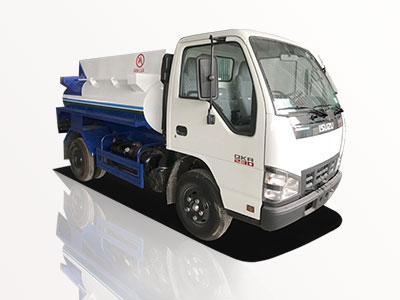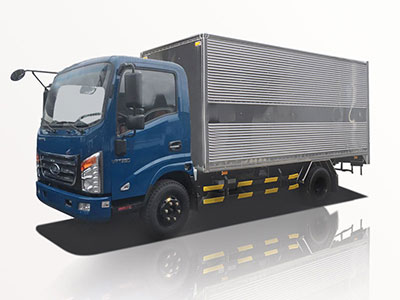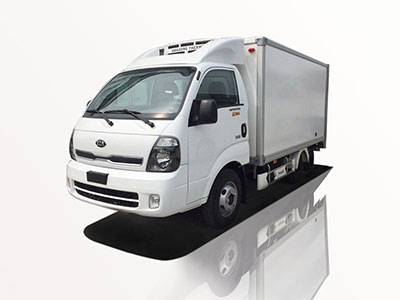Compressed gas tankers play a pivotal role in industries by transporting gases in bulk. This article delves into various aspects of compressed gas tankers, including their types, functionalities, safety protocols, and the regulatory landscape surrounding them. Through detailed insights and practical examples, readers will gain a thorough understanding of this essential aspect of logistics and transport.
Table of Contents
- What is a Compressed Gas Tanker?
- Types of Compressed Gas Tankers
- Design and Construction of Compressed Gas Tankers
- Safety Measures for Compressed Gas Tankers
- Transportation Methods for Compressed Gases
- Regulations and Standards
- Challenges in Transporting Compressed Gases
- The Future of Compressed Gas Transport
- Frequently Asked Questions
What is a Compressed Gas Tanker?
A compressed gas tanker is a specialized vehicle designed to transport gases that have been compressed for storage and transport purposes. These tankers come in various shapes and sizes, tailored to the specific needs of the gases they carry, whether they are industrial gases, chemical gases, or medical gases.
Compressed gas tankers are essential in industries such as manufacturing, healthcare, and energy. They ensure the safe and efficient movement of gases like oxygen, nitrogen, carbon dioxide, and others that are critical for various applications.
Key Components of Compressed Gas Tankers
- Tank: The main component where the gas is stored under pressure.
- Safety Valves: Ensure the tank operates within maximum pressure limits.
- Transport Equipment: Includes pipelines, hoses, and fittings for loading and unloading.
- Monitoring Systems: Used to track pressure and temperature levels.
Types of Compressed Gas Tankers
Compressed gas tankers can be categorized based on their design and the type of gas they transport. Here are some common types:
1. Cryogenic Tankers
Cryogenic tankers are used for transporting gases at extremely low temperatures, such as liquid nitrogen or liquid helium. These tankers are heavily insulated to maintain low temperatures and prevent the gases from evaporating.
2. High-Pressure Gas Tankers
These tankers are designed to carry gases under high pressure, such as hydrogen or natural gas. They are robustly constructed to withstand the pressure inside the tank.
3. Low-Pressure Gas Tankers
Low-pressure gas tankers transport gases that are not highly pressurized. They are less expensive to manufacture and operate, but they may require larger volumes for transportation.
Design and Construction of Compressed Gas Tankers
The design and construction of compressed gas tankers involve rigorous engineering standards to ensure safety and functionality. Here are the main considerations:
Materials Used
Compressed gas tankers are typically made from materials like stainless steel or aluminum, which can withstand high pressure and prevent corrosion.
Tank Design
| Design Type | Application |
|---|---|
| Cylindrical Tanks | Typically used for high-pressure gas transport. |
| Spherical Tanks | Excellent for storing low-pressure gases. |
| Cryogenic Tanks | Designed specifically for transporting cryogenic gases. |
Engineering Standards
Manufacturers must comply with engineering standards set forth by organizations such as the American Society of Mechanical Engineers (ASME) and the Department of Transportation (DOT) to ensure compliance and safety.
Safety Measures for Compressed Gas Tankers
Safety is paramount in the transportation of compressed gases. Companies must implement various safety measures, including:
Regular Inspections
Tankers should undergo regular inspections to check for wear and tear, corrosion, or any leaks. Routine maintenance is critical to ensuring the tanker’s integrity throughout its lifespan.
Emergency Procedures
Operators should be trained in emergency procedures, such as containment, evacuation, and leak handling. Having a robust emergency response plan is crucial for mitigating risks.
Transportation Methods for Compressed Gases
There are various methods for transporting compressed gases, depending on factors like the type of gas, distances involved, and costs.
Road Transportation
Road transport is the most common method for compressed gases, utilizing specially designed trucks or trailers. This method is flexible as it allows door-to-door delivery.
Rail Transportation
For longer distances, rail transport can be an efficient option, utilizing tank cars designed for high-pressure gas transport. This reduces road congestion and is often more environmentally friendly.
Marine Transportation
Marine tankers can transport bulk quantities of compressed gases. Special regulations dictate the design and operation of these vessels, particularly for hazardous gases.
Regulations and Standards
Regulatory compliance is critical in the transport of compressed gases. Here are some key regulations governing the industry:
National Regulations
In the United States, the Department of Transportation oversees the transportation of hazardous materials, including compressed gases. Regulations involve proper labeling, packing, and transport guidelines.
International Standards
Organizations like the United Nations and International Maritime Organization have set forth guidelines for the international transport of hazardous materials to ensure safety across borders.
Challenges in Transporting Compressed Gases
Transporting compressed gases comes with its own set of challenges, which include:
Leakage and Spills
Leakage can occur due to faulty equipment or improper handling, leading to environmental risks and safety hazards. Ensuring all systems are regularly checked can help mitigate this risk.
Changing Regulations
The regulatory landscape for transporting compressed gases can change rapidly. Staying informed about new regulations is critical for compliance and safety.
Market Demand Fluctuations
Market demand for various gases can be volatile, impacting shipping schedules and operational costs.
The Future of Compressed Gas Transport
As industries continue to evolve, the transport of compressed gases is also changing. Innovations in technology and increasing concerns about environmental sustainability are shaping the future landscape.
Technological Innovations
Advanced sensor technologies are being developed for real-time monitoring of gas conditions. This can enhance safety and improve operational efficiency.
Sustainable Practices
Companies are increasingly adopting sustainable practices in the transport of compressed gases, including using alternative fuels for component vessels and implementing energy-efficient systems.
Frequently Asked Questions
1. What are the common gases transported by compressed gas tankers?
Common gases include oxygen, nitrogen, argon, hydrogen, and carbon dioxide. These gases are essential for various industrial applications.
2. How are compressed gas tankers regulated?
Compressed gas tankers are regulated by national and international bodies. In the U.S., the Department of Transportation sets specific guidelines related to safety, handling, and packaging.
3. What should be done in case of a gas leak?
In case of a gas leak, evacuate the area immediately, ventilate if safe, and contact emergency services. Follow the emergency procedures established by the company.
4. Are there specific insurance requirements for compressed gas transport?
Yes, companies must have adequate insurance coverage to account for liability in case of accidents, environmental impact, or damages related to gas transportation.
5. How often should compressed gas tankers undergo inspections?
Compressed gas tankers should undergo inspections regularly, typically every few months, depending on usage and regulatory requirements.
6. What are the risks associated with transporting compressed gases?
Risks include leaks, explosions, and environmental hazards, particularly if the gas is flammable or toxic. Adhering to safety protocols is essential to mitigate these risks.



